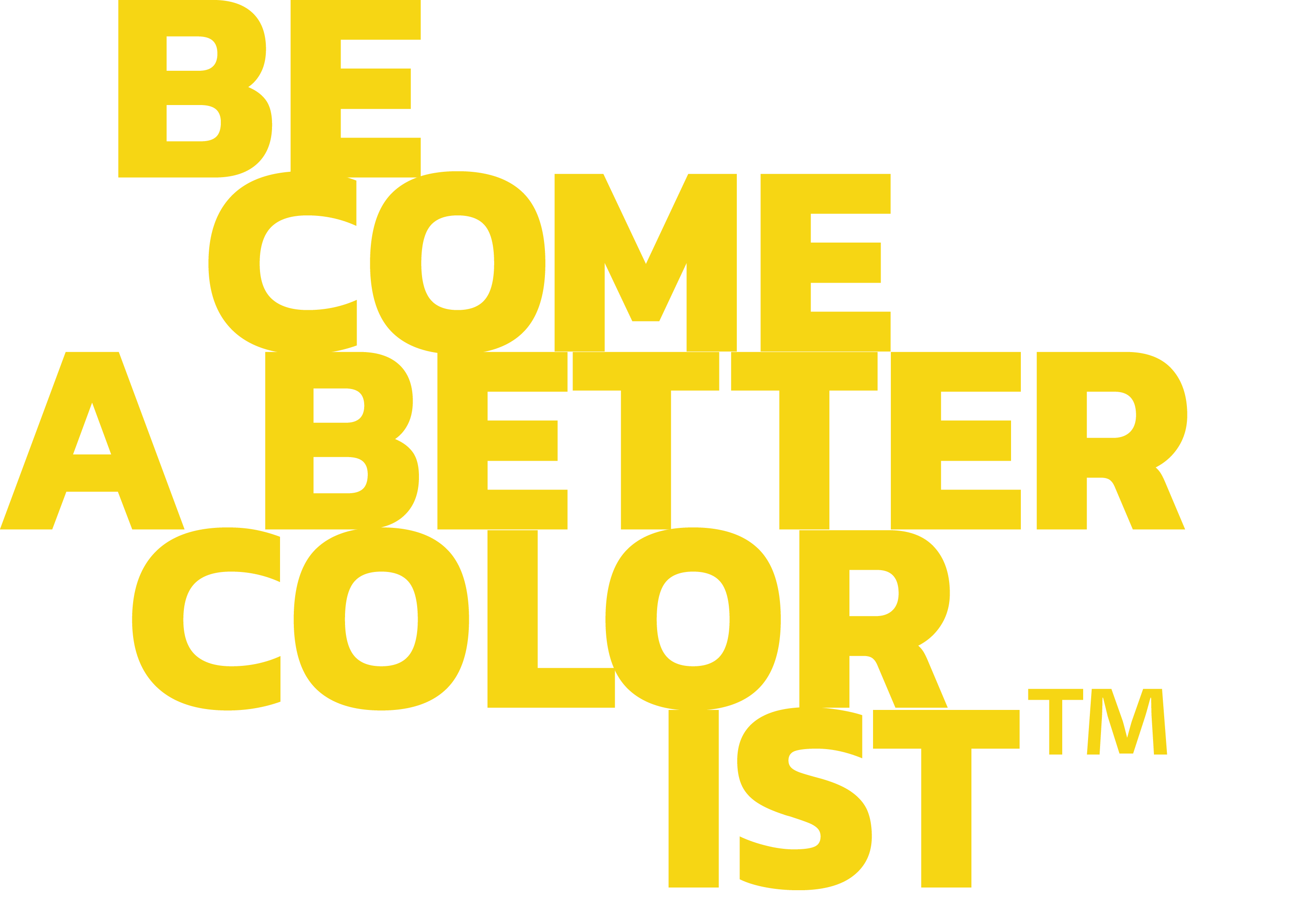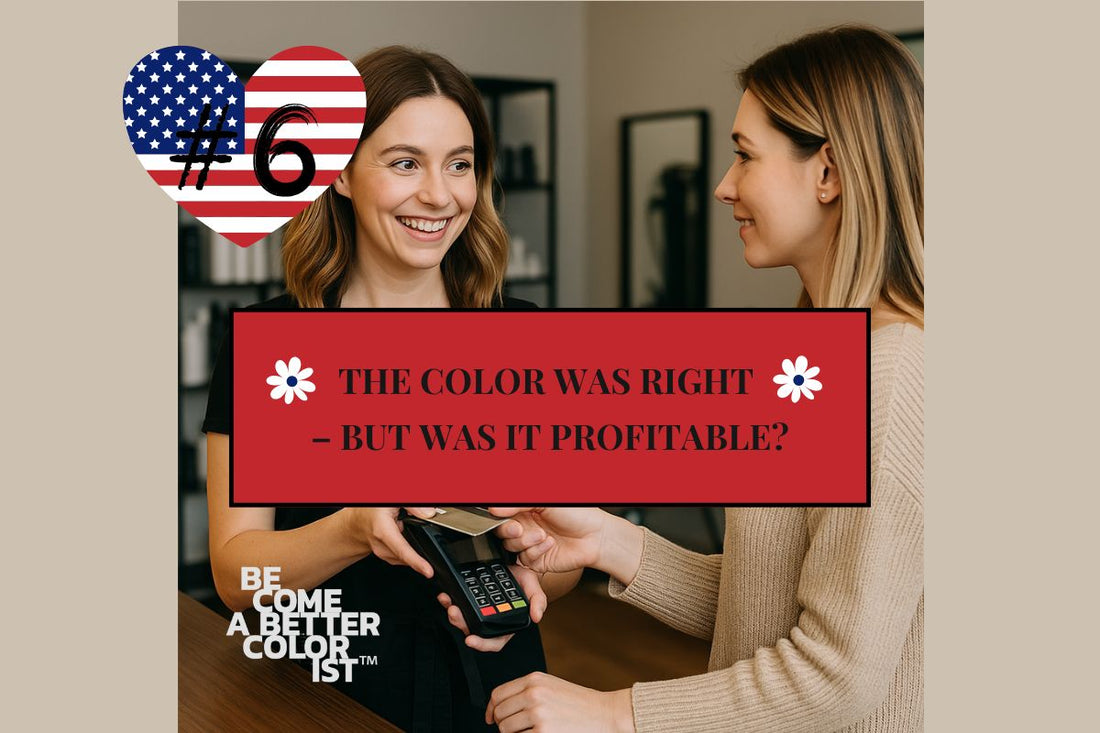🎧 Prefer to listen instead?
This blog post is also available as an audio blog.
👉 Click here to listen on Spotify: #6 The Color Was Right – But Was It Profitable?, As an audio blog on Spotify
Why your color services may not be as profitable as you think.
You mix the color, apply it carefully, rinse, and blow-dry. The client is happy. You’re happy. Everything seems perfect. But when you add up the time, the product, and the earnings at the end of the week – something feels off.
Where did the money go?
This post isn’t about raising your prices. It’s not about selling more. It’s about understanding why you might already be losing money – without even realizing it. And why it often starts with what’s sitting in your color cabinet.
1. An Expensive Habit: “Fixing It”
You know the scenario: the color didn’t turn out the way you expected. You need to adjust. Do it again. Toner on toner, shade after shade. All to achieve the result you and your client are happy with.
But it costs:
-
More product
-
More time
-
More water and electricity
-
Less profit
And yet, it often feels like obvious service. “It’s just part of it.”
But what if you could avoid “fixing it” so often? What if you could predict how the hair would react before mixing your first bowl?
You’d work more efficiently, use the right amount of product where it’s needed – and increase your margins at the same time.
2. An Unnecessary Expense: Always Playing It Safe
Many colorists reach for the same formulas out of habit. 7N. 8A. 6.1. Shades that “usually work.” It feels safe – but is it always right?
The problem is, we tend to overcompensate. We add a little extra, just in case the coverage or lift isn’t enough. This leads to:
-
Too much color
-
The wrong undertone
-
More corrections
-
A disappointed client after a few washes
And there’s another cost we rarely talk about:
All the unused shades sitting on the shelf. They’re bought, they tie up capital – and they age. Eventually, you’re left with expired color you can’t use, but that still cost money.
If, instead, you understand color chemistry, pigments, and undertones, you can formulate your own custom recipes. You don’t need a whole wall of “safe choices” – you create your own.
That means:
-
Less money tied up in inventory
-
Fewer expired products
-
More profit from every service
Knowledge brings freedom – and freedom brings profit.
3. The Hidden Waste: Color Down the Drain
How much color do you rinse away every week?
Many stylists mix too much “just to be safe.” But an extra 100 ml might not seem like a big deal – until you do the math:
-
100 ml per day = 500 ml per week = 2 liters per month
-
2 liters per month at $0.20/ml = $400 per month
-
Over a year: nearly $5,000 – down the drain
That’s money you’ve already spent. Already worked for. And already lost.
With a better understanding of processing time, pigment strength, and color selection, you can reduce waste – and still get better results.
It’s not about being stingy.
It’s about knowing what you’re doing.
4. The Time You Don’t Charge For
Color takes time – but not always visible time. How many minutes do you spend:
-
Consulting with a colleague?
-
Standing by the chair, second-guessing?
-
Fixing something that didn’t turn out as planned?
Ten minutes here, fifteen there. It adds up quickly – and no one’s paying for those hours.
A solid consultation is the foundation. When you take your time and get it right from the start, you know what you’re doing. You avoid unnecessary thinking and can focus on the work itself. Everything flows faster – not because you’re rushing, but because you’re confident.
It’s not about mixing huge bowls of color up front.
It’s about knowing what you need and when – so every mix has a purpose and value.
5. When Knowledge Elevates Both Results and Value
A satisfied client is a good result. And in your chair, it’s important to trust your work and not get stuck in self-criticism.
But knowledge gives you the chance to take things further:
To not only deliver a good result – but one that impresses, lasts longer, and makes the client gladly pay for your expertise.
When you understand color chemistry, pigment interaction, and hair behavior, you can deliver that extra edge that sets you apart. You know how to avoid those “not quite right” outcomes – because you created a result that’s thoughtful and built to last.
Knowledge is power – the power to deliver visible value for your client and for your bottom line.
6. When Knowledge Becomes Profit
It’s often more exciting to develop new techniques than to dive into color theory or chemistry. We easily assume that what we once learned still applies. But color chemistry, pigments, and products change – and that means theory needs to evolve, too.
The more you understand, the less you need to struggle. And the more you earn.
Knowledge helps you work smarter, safer, and more profitably. Here’s what strong color knowledge gives you – financially:
-
Less waste – you mix only what you need, when you need it
-
Less time – you know what works, right away
-
Fewer corrections – no need for second rounds
-
Higher client satisfaction – they notice the difference and come back
-
A stronger brand – you become the go-to colorist who truly delivers
7. What You Don’t Charge For – But Still Pay For
When we think about the cost of a color service, we often only consider labor and the product – color and developer. But that’s just a fraction of the true cost.
Every service comes with hidden expenses that often go unnoticed, but still eat into your profits:
-
Toners
-
Bleach
-
Cleansing products (especially with hard water)
-
Shampoo, treatments, styling products
-
Gloves, foil, plastic
-
Towels (and the cost to wash them)
-
Electricity, water, rent
-
Coffee, magazines, small service items
-
And don’t forget: social fees and taxes on your labor
You pay for all of it. But do you charge for all of it?
Many stylists don’t. They “absorb the cost” – or forget to include it entirely. And while that might feel generous – it’s not sustainable.
Every treatment has a real cost.
The better you know what you’re using – and why – the easier it is to charge fairly and confidently.
8. “But I Still Make Good Money on Color”
Maybe you do. Your schedule is full, your color clients love you, and your reputation is strong. But do you know exactly how each color service affects your profitability?
Here are a few ways to increase your profit per service:
-
Deepen your color knowledge – so you can formulate better and reduce waste
-
Offer add-ons – like cleansing, glossing, or customized care
-
Create clear pricing packages – so you’re charging for what you actually do
-
Pre-book return visits – it strengthens loyalty and smooths your income flow
It’s not about working harder. It’s about working smarter.
And it starts with understanding exactly what you’re doing with the color.
It Doesn’t Start With the Product. It Starts With You.
It’s not the product that makes a treatment profitable. It’s you.
And the more you know – the more you gain. Not just in results. But in time, money, energy, and confidence.
What if you could:
-
Cut product costs by 20%
-
Shorten treatments by 15 minutes
-
Get clients to rebook before they leave
-
Avoid follow-ups where you fix things for free
That’s not a fantasy. It starts with the right education and the right knowledge.
Because when you truly understand what you’re doing, you can work smarter, improve quality, and create results that make both you and your client proud.
So next time you’re standing there with the color bowl in your hand – ask yourself:
Do I know what I’m doing? Or am I just hoping it turns out okay?
Because the difference between the two isn’t just color.
It’s profit.
/Camilla Rörstrand

